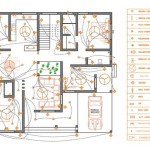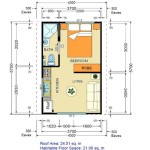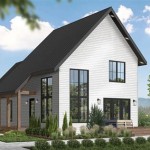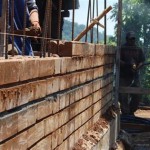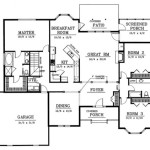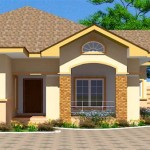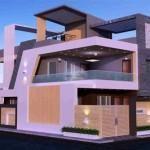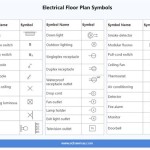Passive Solar Small Home Floor Plans: Designing for Energy Efficiency and Comfort
Passive solar design offers an effective strategy for reducing energy consumption and enhancing comfort in small homes. By strategically orienting the home and incorporating specific design elements, homeowners can harness the sun's energy for heating and cooling, minimizing reliance on conventional HVAC systems.
Key Principles of Passive Solar Design
Effective passive solar design hinges on several key principles:
- Orientation: Positioning the home's long axis along an east-west orientation maximizes solar gain in winter.
- Solar Gain: Utilizing south-facing windows allows ample sunlight to enter during the colder months, passively heating the interior.
- Thermal Mass: Incorporating materials with high thermal mass, such as concrete or brick, stores solar heat and releases it slowly, regulating indoor temperatures.
- Insulation: Proper insulation minimizes heat loss in winter and heat gain in summer, maintaining comfortable indoor conditions year-round.
- Ventilation: Strategically placed windows and vents promote natural airflow, reducing the need for mechanical cooling.
- Shading: Implementing shading devices like overhangs or awnings prevents overheating during summer while allowing winter sunlight to penetrate.
Exploring Passive Solar Small Home Floor Plans
Several floor plan options cater to passive solar design principles in small homes. Each option offers distinct advantages and considerations:
One-Story Ranch Style
One-story ranch-style homes are well-suited for passive solar design due to their simple rectangular shape. Their long axis can be easily oriented east-west, maximizing southern exposure. South-facing windows along the front facade allow for optimal solar gain in winter. Open floor plans facilitate even heat distribution throughout the home. Overhangs above the south-facing windows can be incorporated to provide summer shading.
Two-Story with South-Facing Living Spaces
Two-story homes can effectively utilize passive solar design by prioritizing south-facing living spaces. Locating the living room, dining area, and kitchen on the south side maximizes solar gain during the day. Bedrooms positioned on the north side benefit from reduced temperature fluctuations. A strategically placed staircase can aid in distributing warm air throughout the home.
Small Footprint Bungalow with Sunroom Addition
Bungalows with a small footprint can be enhanced with a south-facing sunroom addition. This serves as a solar collector during winter, passively heating the adjoining living spaces. The sunroom can be utilized as a three-season space, extending the usable living area. Operable windows in the sunroom allow for natural ventilation during warmer months.
Earth-Sheltered Designs
Earth-sheltered homes, partially built into the ground, leverage the earth's stable temperature for passive heating and cooling. South-facing windows and strategically placed skylights maximize daylighting and solar gain. The earth's insulating properties minimize temperature fluctuations throughout the year. These designs are particularly effective in climates with significant temperature variations.
Key Considerations for Passive Solar Small Home Floor Plans
When planning a passive solar small home, certain considerations are crucial:
- Climate: The local climate significantly impacts the effectiveness of passive solar strategies. Homes in colder climates require larger south-facing windows and increased thermal mass, while homes in hotter climates benefit from extensive shading and natural ventilation.
- Site Analysis: A thorough site analysis, including solar access, shading from trees or buildings, and prevailing wind patterns, is essential for optimizing passive solar design.
- Window Placement and Sizing: Strategically placed and sized windows are crucial for maximizing solar gain in winter while minimizing overheating in summer.
- Thermal Mass Materials: Selecting appropriate thermal mass materials, such as concrete, brick, or water, helps regulate indoor temperatures and store solar heat.
- Insulation and Air Sealing: High-quality insulation and airtight construction minimize heat loss and gain, enhancing the effectiveness of passive solar strategies.
Incorporating Passive Solar Design into Existing Small Homes
Existing small homes can also benefit from passive solar principles through renovations or additions. Adding south-facing windows, increasing insulation, and incorporating thermal mass can significantly improve energy efficiency and comfort. Retrofitting existing overhangs or installing awnings can provide summer shading. Consulting with a passive solar design expert can help homeowners identify the most effective strategies for their specific home and climate.
Benefits of Passive Solar Small Home Designs
Passive solar design offers numerous benefits for small homes:
- Reduced Energy Bills: By harnessing the sun's energy for heating and cooling, homeowners can significantly reduce their reliance on conventional HVAC systems, leading to lower energy bills.
- Increased Comfort: Passive solar design helps maintain consistent and comfortable indoor temperatures year-round.
- Environmental Sustainability: Utilizing renewable solar energy reduces a home's carbon footprint and promotes environmental sustainability.
- Improved Indoor Air Quality: Natural ventilation strategies associated with passive solar design can improve indoor air quality.
Passive solar small home floor plans provide an efficient and sustainable approach towards achieving energy efficiency and comfortable living. By carefully considering the principles of passive solar design and incorporating them into the floor plan, homeowners can create homes that are both environmentally friendly and cost-effective.

Passive Solar House Plan 2 Bedrms Baths 1418 Sq Ft 146 2710

Passive Solar 1600 0060

Solar Adobe House Plan 1870

Ranch House Plans For A Passive Solar 1 Bedroom Home

Passive Solar House Plan 2 Bedrms Baths 1418 Sq Ft 146 2710 Plans Homes

Craftsman Plans For A Simple Passive Solar 4 Bedroom Home

Great Floor Plan For Solar Passive Home In Google Search House Plans Narrow

Passive Solar House Design

Passive Solar House Plans For Our Off Grid Homestead Byexample Com

Affordable Passive Solar Planbook Appalachian Energy Center

